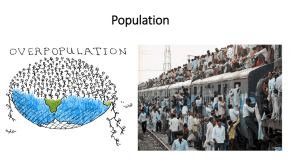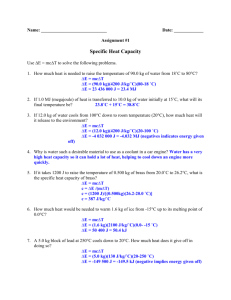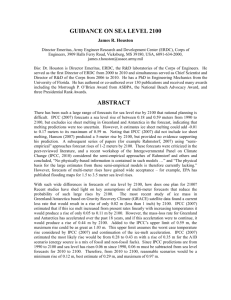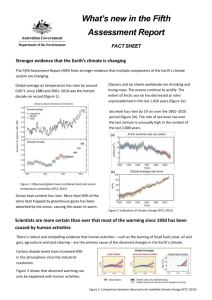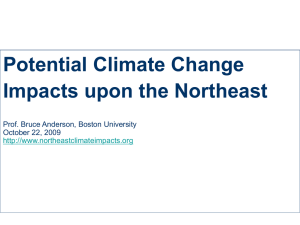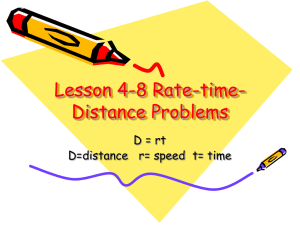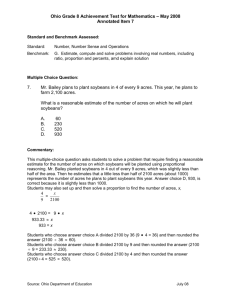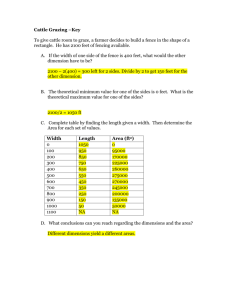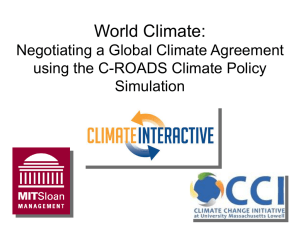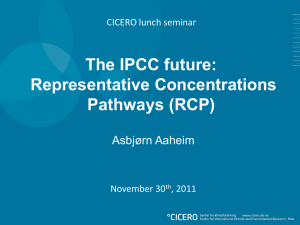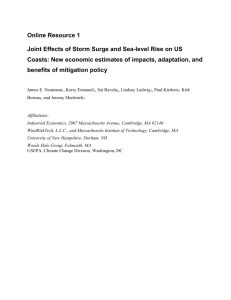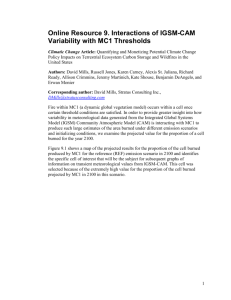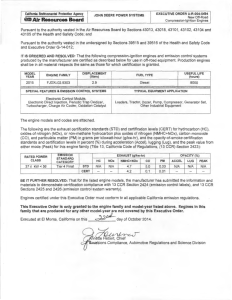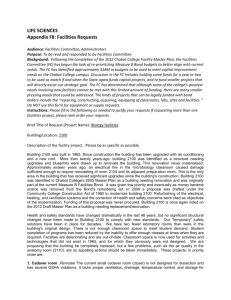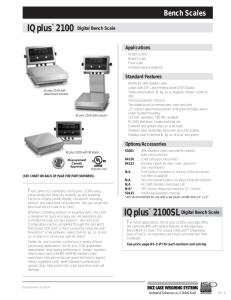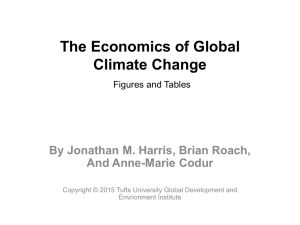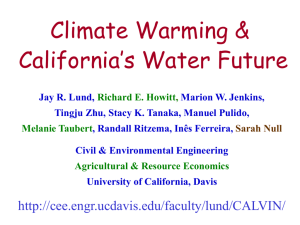File - bridgebuilders trust network
advertisement
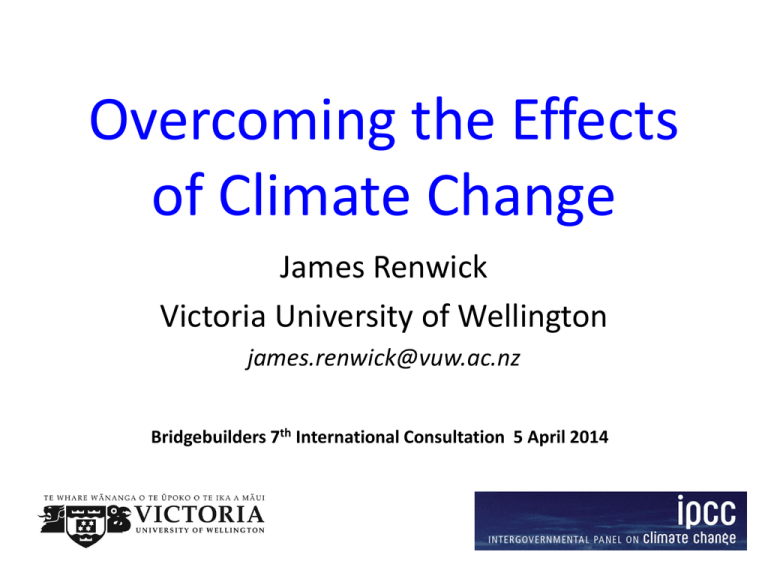
Overcoming the Effects of Climate Change James Renwick Victoria University of Wellington james.renwick@vuw.ac.nz Bridgebuilders 7th International Consultation 5 April 2014 www.ipcc.ch/report/ar5/wg2/ Carbon dioxide concentration: controls the amount of heat the atmosphere absorbs Typical maximum during interglacials (Lüthi et al.,2008, NOAA) The atmospheric concentrations of carbon dioxide, methane, and nitrous oxide have increased to levels unprecedented in at least the last 800,000 years. Climate Response Accumulation of heating 93% Based on Nuccitelli et al. (2012) Ice Melt: Greenland Ice Melt: Antarctica Sea level rise 1901-2010: 1.7 mm/yr 1993-2010: 3.2 mm/yr Sea level rise Trend, 1993-2012 from satellite data Surface temperature change © IPCC 2013 Annual average Each of the last three decades has been successively warmer at the Earth’s surface than any preceding decade since 1850. In the Northern Hemisphere, 1983–2012 was likely the warmest 30year period of the last 1400 years (medium confidence). Many extremes have changed Phenomenon and direction of trend Assessment that changes occurred Fewer cold days and nights Very likely More hot days and nights Very likely Increases in frequency and/or duration of heat waves Medium confidence on a global scale Likely in large parts of Europe, Asia and Australia Increase in the frequency, intensity, and/or Likely more land areas with increases amount of heavy precipitation than decreases Increases in intensity and/or duration of drought Low confidence on a global scale Likely changes in some regions Increases in intense tropical cyclone activity Low confidence in long term (centennial) changes Increased incidence and/or magnitude of extreme high sea level Likely (since 1970) Source: SPM Table 1 © IPCC 2013 The future Global surface temperature change for the end of the 21st century is likely to exceed 1.5°C relative to 1850−1900 for all scenarios except RCP2.6. Total emissions and total warming 2100 2100 © IPCC 2013 2100 2100 Limiting climate change will require substantial and sustained reductions of greenhouse gas emissions. Model global projections: 2081-2100 • More moisture in the air • Bigger rainfall variability, stronger monsoons • Wet wetter, dry drier • Increase in extremes: Heavy rain, wind, storms... • Ocean Acidification: Big risks for marine food webs… Temperature change: 100 years Rainfall change: 100 years Sea Level Rise RCP8.5 • Between 60cm & 1m RCP2.6 – Depending on emissions – Plus/minus 20cm • NZ add +10% • Possible range (NZ) – 55cm to 1.3m by 2100 – 10m commitment? Coastal inundation 10cm SLR = triple the risk The frequency of coastal inundation world-wide likely increases by 100 to 1000 times with ~50cm SLR (by 2100) – Annual events become daily events 100-year events occur every few months Tropical cyclone occurrence Courtesy of Howard Diamond, NOAA/U. Auckland • Future location and occurrence may not change much – Intensity likely to increase Legacy issues • ‘Business as usual’ to 2100 likely to lead to 6-10°C of global temperature rise (next 500 years) – Melting of Greenland and West Antarctic ice sheets • Commitment over ~1,000 yr, recovery over ~10,000 yrs – Sea level rise of 10-20 metres – A climate not seen for millions of years • Billions of people at risk • Concerted mitigation efforts can avoid this – Zero emissions by 2100, preferably sooner Reflections • Human influence on the climate system is clear • Climate change will persist for many centuries, even if carbon dioxide emissions are stopped. • Projected warming by 2100: – For RCP8.5 – For RCP2.6 About as likely as not to exceed 4°C 67% probability to stay below 2°C • We have a choice Thank You

